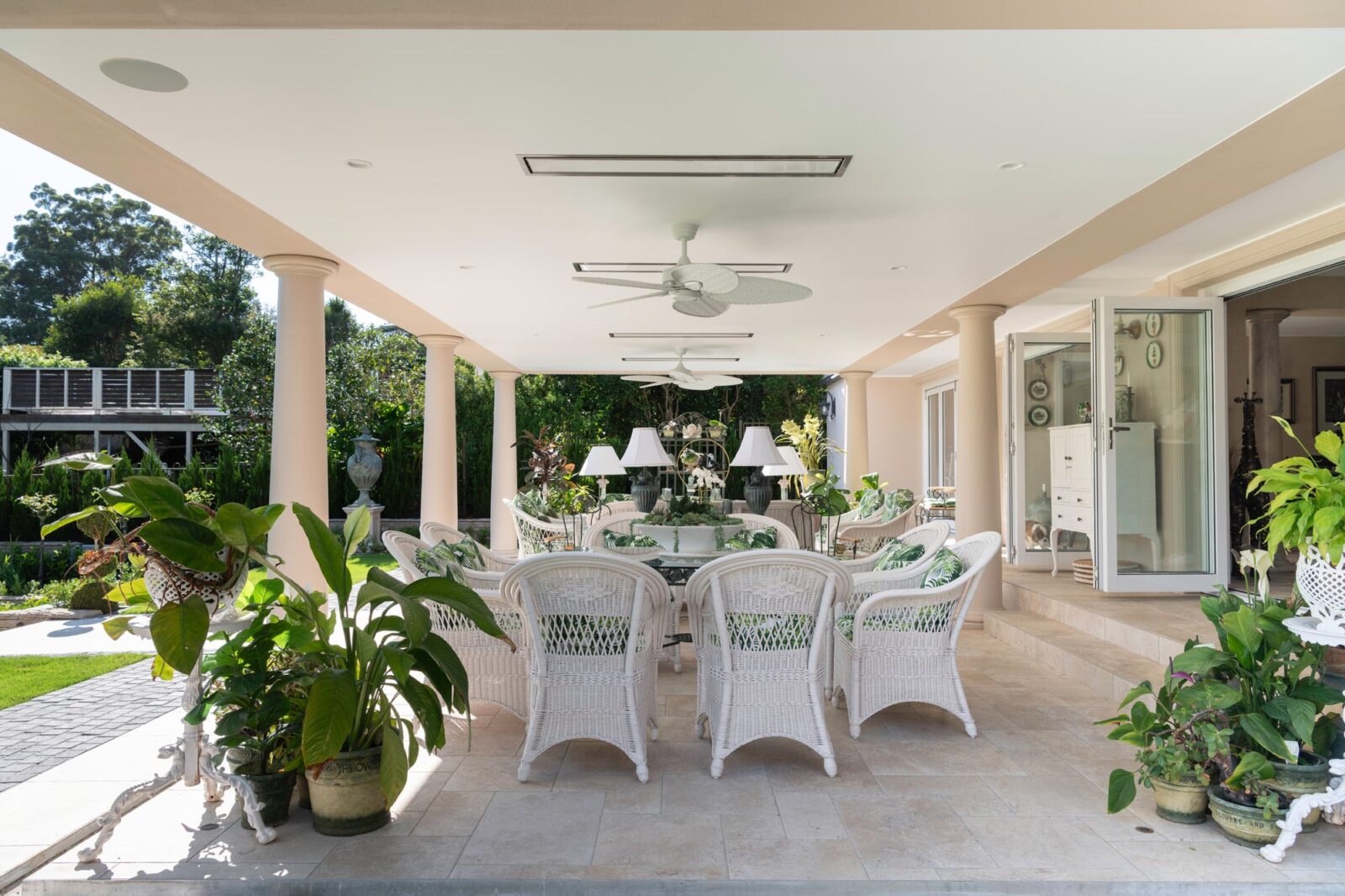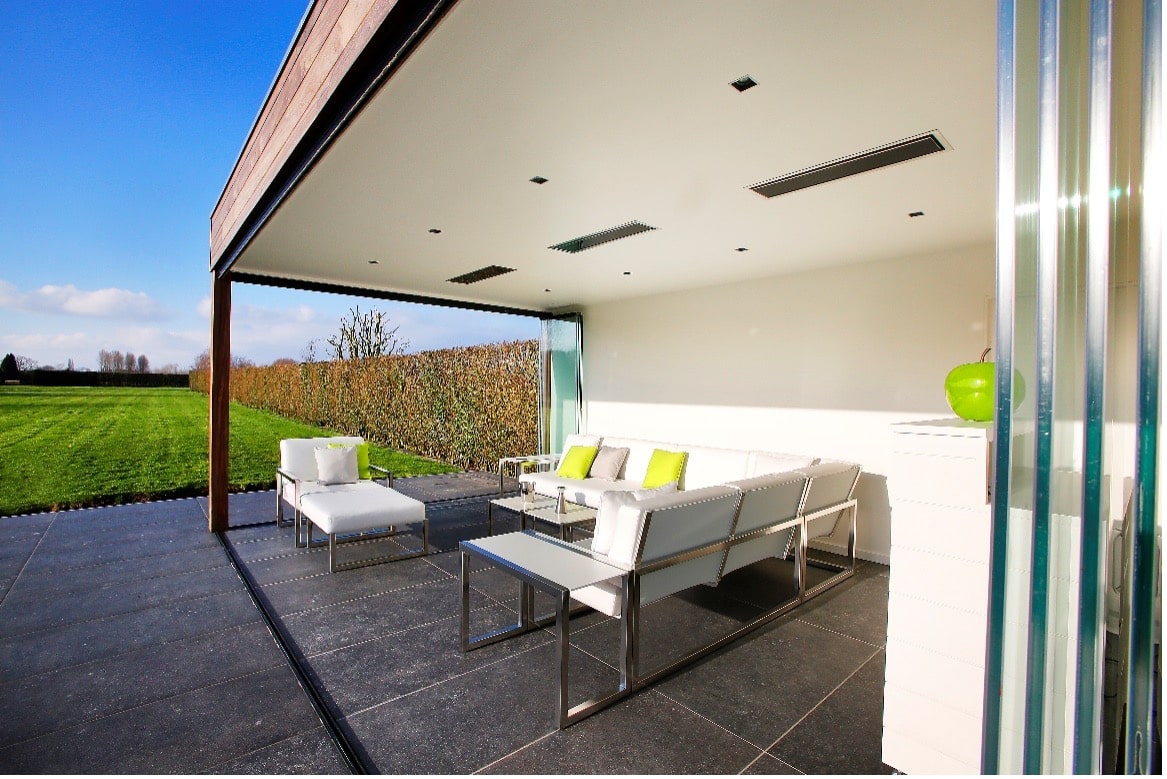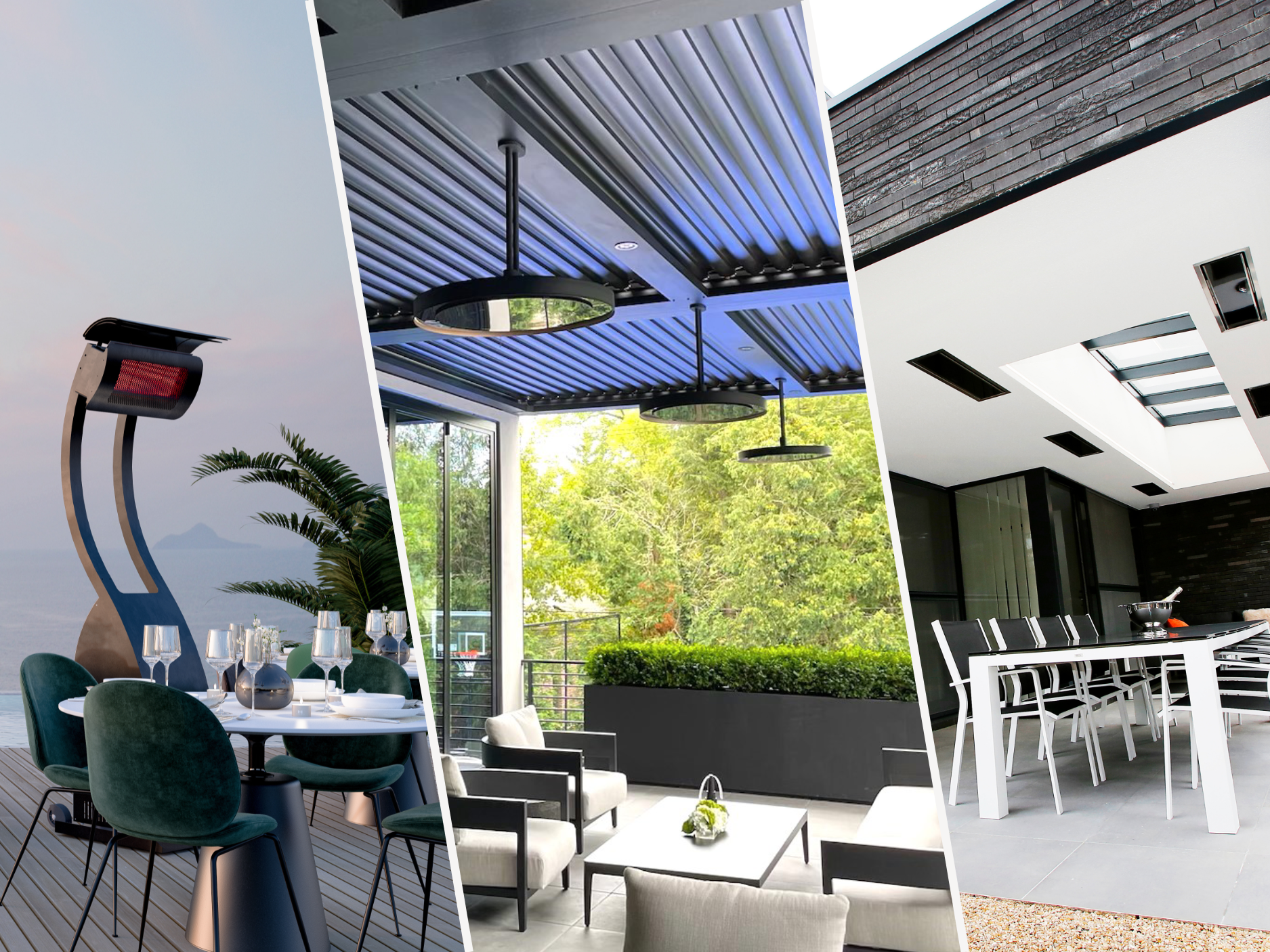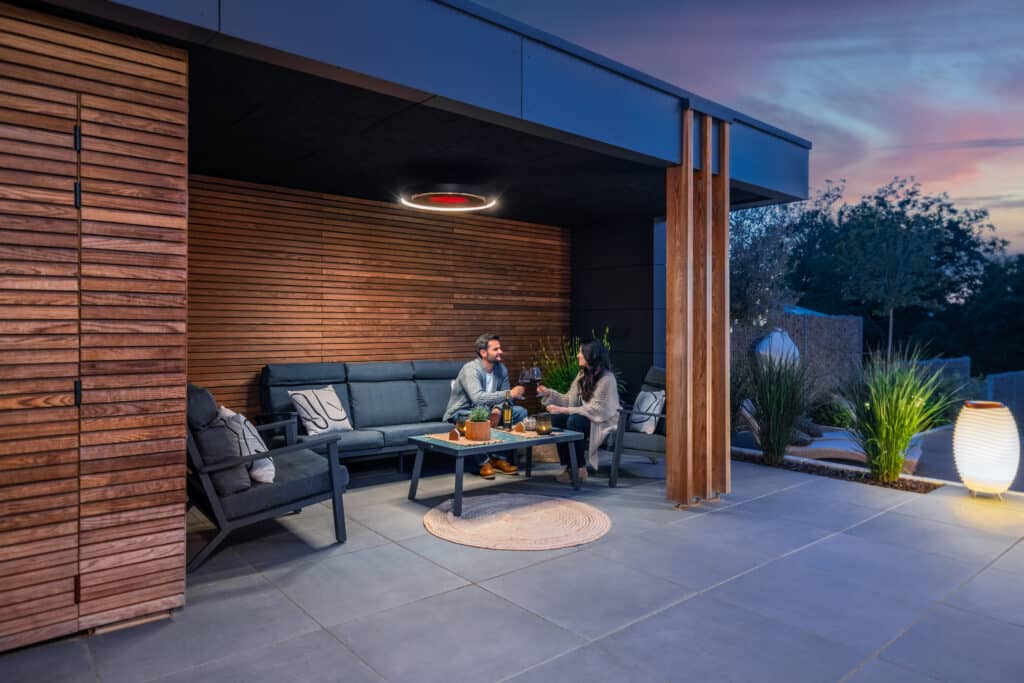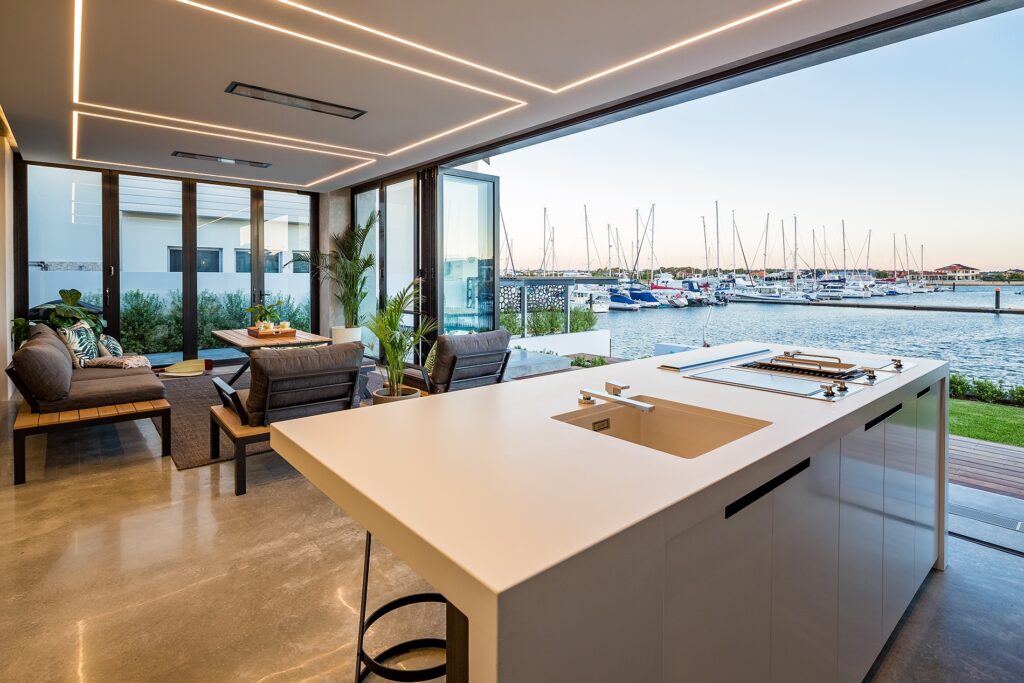Covered patios are a great way to extend the outdoor season as they provide shelter from the elements and can act as external living, dining or workspaces. With more and more outdoor spaces starting to resemble indoor spaces, a lot of people are asking if it’s safe to add a patio heater to their covered patio. The short answer is yes! Adding a heater to your covered patio can add an extra layer of comfort when the temperatures drop and is absolutely safe when following established manufacturer requirements. Before installing a new patio heater it’s especially important to be mindful of patio heater clearance requirements to ensure you get the most out of your heater while minimizing any potential health and safety risks.
What Is My Patio Heater Clearance?
The minimum patio heater clearance requirements of your space will vary from heater to heater and depend on the source of power (gas or electric) and the amount of energy the heater emits. The recommended distance from the floor usually ranges between 2 to 3 meters for both gas and electric models, depending on the power output of the heaters and the layout and geographic location of your patio.
Gas heaters tend to be more powerful than electric heaters, so Bromic recommends at least three feet between the gas heater and the ceiling and another three feet to the wall or other combustibles. However, the good news is that ceiling clearances can often be reduced to a mere 35 centimeters with the installation of a heat deflector above the gas heater head.
Electric heaters offer a bit more flexibility when it comes to patio heater clearances as they’re often designed so that the majority of heat is deflected from the back and the sides of the heater. This means they only need about 25 centimeters of clearance to the sides and between 15 to 25 centimeters of clearance space above.
TIP 1: Check out our article on how to choose the best heater for your space before you buy!
Why Does My Patio Heater Have Clearance Requirements?
Patio heater clearance requirements play an important role in your pre-installation checklist. Adhering to the correct clearances is vital to ensure the heater operates at its optimum performance levels while meeting all the necessary safety standards. For example, if the heater is installed too high, it might not deliver the desired temperature or may need to operate on its highest level and therefore waste more energy than necessary. Heaters that are installed too low or too close to other objects can present a fire hazard, these clearances are defined to ensure nearby objects stay below safe temperature limits. To eliminate risk and ensure your heater delivers the optimum heat distribution, make sure the heater is kept at the safe distance (noted by your heater manufacturer) from walls, ceilings, furniture and fabrics such as tablecloths, awnings or curtains.
TIP 2: Always consult the manufacturer’s installation guidelines for detailed patio heater clearance specifications before installing your outdoor heater!
Where Can I Place My Heater in My Covered Patio?
Before installing a new outdoor heater, make sure you consider the following points:
- What kind of space are you trying to heat? The overall dimensions and design of your patio will determine how many heaters you will need and where to place your heaters to achieve the optimum heat coverage. Equally important is the average outside temperature of your location, the existence of other heat sources (e.g. a fireplace) and how enclosed the space is. For example, while semi-enclosed patios are great for retaining the heat, if utilizing gas heaters the space needs to be 25% open to ensure enough airflow. Ceiling and wall height will also come into play and determine where the heaters can be mounted.
- How do you plan on mounting your patio heaters? With either ceiling or wall mounting, there are various installation options to fit your heating needs. Clearance should be considered for not only the space from the heater to the wall or ceiling, but also from the ground. For both safety and optimum performance, there are ideal height clearance ranges based on fuel type and product lines. This can be achieved for your desired space through both low profile and longer mounting pole options, depending on the height of your space and referencing manufacturer guidelines.
- Are there any other objects in your space? Always make sure that there is at least a three feet clearance space between the heater and other objects in the area. This could be TVs, Speakers, ceiling fans, lights or sprinklers. Extra care should be taken with fabrics, such as awnings, blinds or curtains as these items tend to be highly flammable. Always make sure to read the manufacturer’s guidelines or contact them directly if in doubt.
For more information on outdoor heater safety, check out the fact sheet from the National Fire Protection Association.
TIP 3: Visit our technical resource page to download the product brief or manual of your preferred Bromic Outdoor Heater for clearance specifications!
Still Not Sure Where To Start?
At Bromic, we’re experts at designing the perfect outdoor space, so get in touch with our Outdoor Heating Specialists today, so they can draw up a complimentary heating design layout that is specifically tailored to your space.

